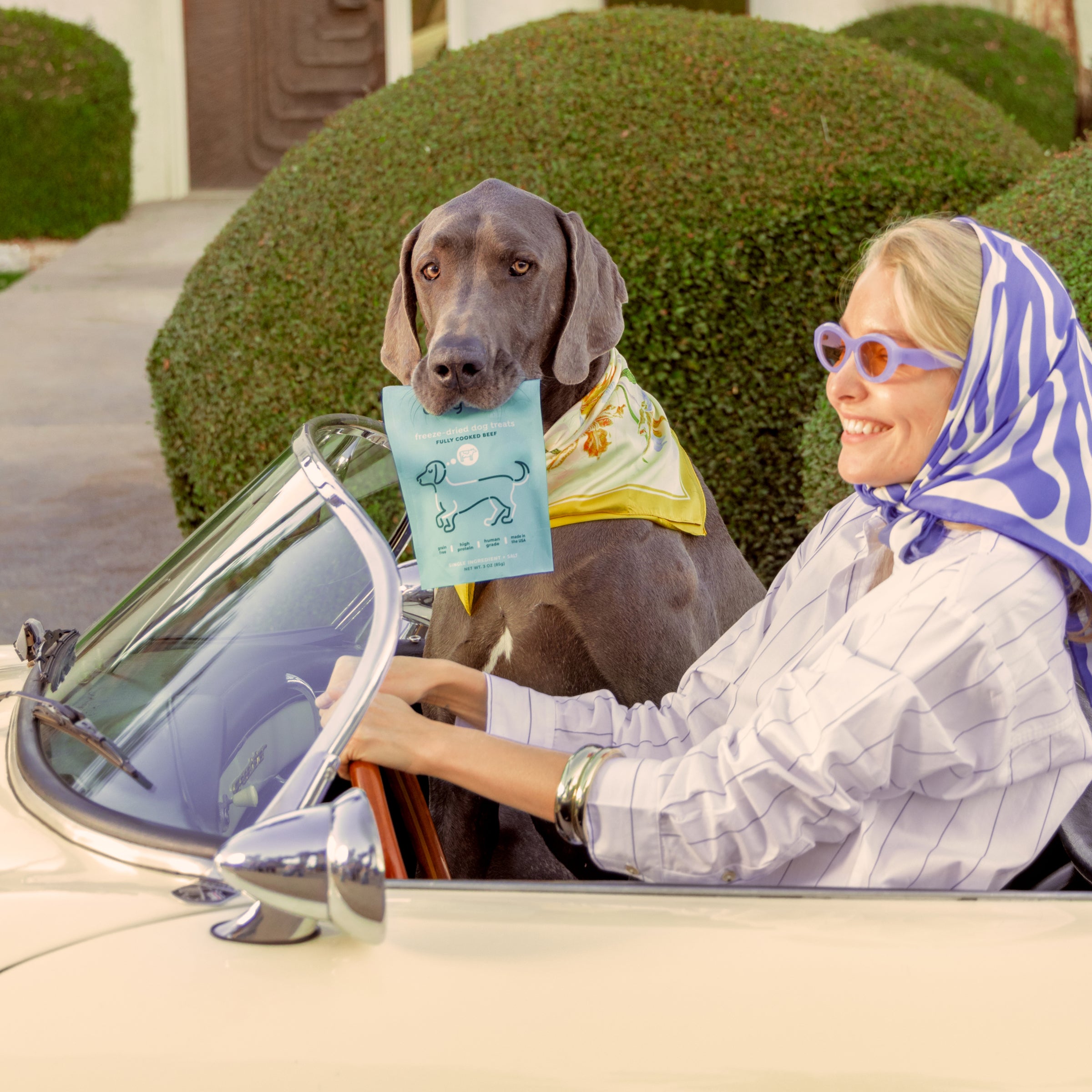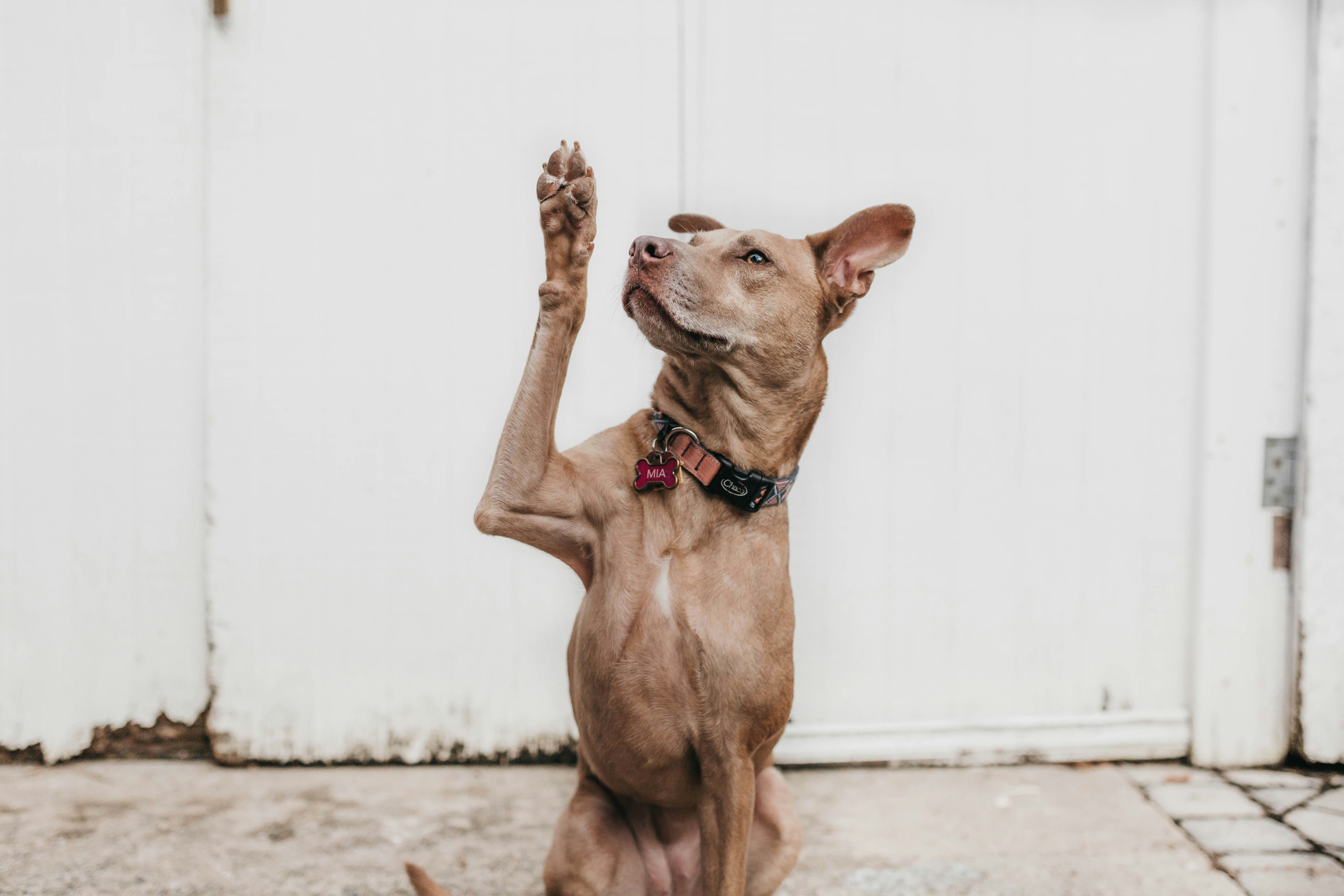Whether it's Scooby Doo or Doug from UP, pop culture is always coming up with dogs that can communicate with humans. Any pet owner would love to be able to hear what their dog’s innermost thoughts are. Our dogs can comprehend the words we teach them, but can us owners understand what they’re trying to tell us?
Bunny the Sheepdog became famous on TikTok because her owner taught her how to verbalize her thoughts through buttons that she could press. As entertaining as it can be to teach your dog to speak through these buttons, it is still important to understand the signs that your dog could be sending to you through their body language.
As you read on, you should know that not all behaviors will be straightforward. Some signs require you to evaluate multiple aspects of your dog’s body language in order to understand what’s really going on.
Why You Need To Know The Signs
All dog owners should learn what their dog is telling them. There are many behaviors that your dog might do that, while cute, are telling you they’re stressed out. Recognizing when your dog might be stressed, fearful, or confident is a great way to strengthen the bond between the two of you.
There are multiple situations when knowing the signs your dog is displaying is most vital.
- Adopting a new dog
- Visiting a dog park
- Encountering a strange dog
- And more!
Your dog wants you to understand their feeling and thoughts just like they understand yours. Dogs will often repeat the same body language when their human acknowledges their efforts at communicating. When we don’t comprehend what they’re trying to tell us, they will attempt to use direct methods, such as lunging or barking.
Follow along as I point out the top things you should look out for as you interact with your dog!
All About That Tail

Your dog’s tail is one of the easiest ways to understand how they’re feeling. Dogs tend to show their feelings in three ways when it comes to this body part: position, speed, and stroke length.
Position
All dog breeds hold their tails differently. Greyhounds hold their tails between their legs, a beagle will hold their tail vertically, and many other breeds will hold their tail near their heels. Before you interpret your dog’s body language, it is important to understand what their body looks like when they are feeling neutral. Familiarize yourself with your dog’s mannerisms so that you can better understand them.
Here are notable tail positions to look out for:
Straight Out: This is a common tail position for when your dog is meeting another dog for the first time. It indicates they’re gathering new information or feel neutral about their surroundings.
High and Stiff: Your pup is likely alert and contemplating what is happening around them. However, this can also be a show of dominance.
High and Wagging: Your dog is alert but happy!
Curled, between the legs: A dog with its tail between its legs can be stressed, uncomfortable, or fearful of their environment.
Wagging to the Left: This typically indicates that your dog is untrusting of someone they’re encountering or that they are stressed out and fearful.
Wagging to the Right: Your dog has positive feelings and is feeling relaxed!
Speed and Stroke Length
The speed and length of your dog’s tail wags can tell you a lot. A fast tail with large movements indicates that your dog is friendly and happy, while a slow tail with small movements will indicate that your dog might be anxious and insecure. Quick movements with short strokes–often in a neutral position–accompany meeting a new dog and show that your dog might be feeling tentative in their current environment.
Not all things that are fast are good! Tiny movements with high speeds can be indicative that your dog is in fight or flight mode. When accompanied by a high tail position, this is a sign of an active threat.
Look at That Pretty Face!
Research has shown that dogs will be more expressive when their human is looking at them and are less likely to show the same expressions when our backs are to them.
One of the most well-known expressions is the puppy eyes. When your dog raises their eyebrows and stares at you with large eyes, they want something and are trying to motivate you to do it. It is also commonly known that a head tilt indicates that your dog is curious, smiling means they’re excited, and wrinkling of their nose (paired with bared teeth) is a sign of aggression.
A few signs of your dog being anxious can also be applied to other interpretations. While a yawn might mean your dog is tired, it can also mean that your dog is anxious in their current situation. Similarly, lip-licking might be them cleaning up a particularly delicious dinner, but outside that context, it means they’re anxious or stressed. Lip-licking can also be displayed when a dog is fearful, confused, or overwhelmed. A dog panting with an open mouth could be signaling stress if observed in a context outside of exhaustion.
Appeasement is a word you might’ve heard before. Dogs will attempt to appease when they are trying to de-escalate something they might deem a threat. Appeasement is associated with submission and is likely shown as a grin. This will look like a closed mouth with the teeth being visible.
What Great Big Ears You Have! What Great Big Eyes You Have!

With animals, the eyes are very important. Every animal has evolved in a certain way that allows their eyes to either be protected, see a certain degree of field, or elaborate emotions. Dogs are no different.
Soft eye contact can indicate that a dog is social, confident, and friendly, while hard eye contact showcases aggression. If your dog breaks eye contact with either you or another animal, they are attempting to de-escalate a situation. While eye contact between humans is a sign of respect, in dogs it conveys confrontation or aggression. When a dog is avoiding eye contact, they are attempting to be non-confrontational.
A dog with a whale eye might look like it’s side-eyeing you, but it actually has two potential meanings and no, they’re not judging you. Innocently, this can simply be because your dog is looking to the side, but it can also mean your dog is stressed or worried. Squinting eyes can be a sign of appeasement or fear.
There are three main positions to keep an eye out for when it comes to your pup’s ears.
Stance
- A tense body can be hard to identify by sight alone, especially if you have a long-haired dog. When your dog freezes or becomes tense, they are stressed about something that they can either smell or hear. The reason your dog is tensing up at these cues is either that they are attempting to de-escalate a situation or want to gather more information before making a decision.
- A dog that is interested in visual, auditory, or olfactory cues will shift their weight to their front paws. This is their way of getting closer without fully moving. This movement can be indicative of a dog that is interested, or when paired with a high, twitching tail, the dog might be displaying aggressive behavior and attempting to appear larger.
- Who doesn’t love belly rubs? The collective “awww” that a room will give when a dog rolls on its back is easy to imagine. A dog rolling onto its back is not always a sign they want their tummies rubbed. If your dog rolls over slowly with a slightly tense body, they are likely being submissive and showing they’re not a threat. This dog might be stressed out or anxious.
- One of the most notable signs of an anxious or stressed dog is when it shrinks away from whatever or whomever is intimidating them. A dog displaying this is trying to put as much distance as possible between themselves and that thing. They are attempting to seem as small as they can to de-escalate.
- A raised front paw shows that a dog is displaying that they’re feeling insecure or uncertain about a situation. Oftentimes when a dog is unsure of how to react to another animal, they will be raising a paw.


